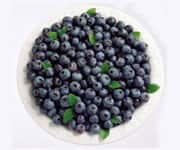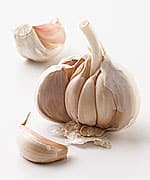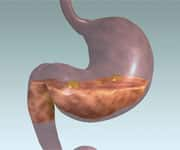Life Extension Magazine®
Vitamin D Status Tied to Physical Performance in Elderly | |
| Low levels of vitamin D in elderly people are predictive of declining physical performance, according to results of a three-year study conducted by researchers in the Netherlands.1 The study monitored the physical performance of more than 1,200 men and women aged 65 and older, allowing for confounding factors such as age, gender, and chronic diseases. Subjects with the highest levels of serum 25-hydroxyvitamin D—the main circulating form of the vitamin—were more likely to perform well on standardized tests of physical capabilities throughout the study period. By contrast, the performance of those with the lowest vitamin D levels declined from year to year. The body’s ability to manufacture vitamin D from sunlight declines with age, and ultraviolet light in wintertime is insufficient to drive this process in any event, especially in northern latitudes.2,3 Vitamin D levels among many groups, including the elderly, are suboptimal. In the Dutch study, nearly one half of the subjects had vitamin D levels that were too low.1 —Dale Kiefer | |
| Reference | |
| 1. Wicherts IS, van Schoor NM, Boeke AJ, et al. Vitamin D status predicts physical performance and its decline in older persons. J Clin Endocrinol Metab. 2007 Mar 6; [Epub ahead of print] | |
Omega-3 Fatty Acids Boost Brain Volume, Mood | |
Higher intake of omega-3 fatty acids is associated with greater volume in areas of the brain related to mood and behavior,* according to findings presented at the American Psychosomatic Society’s Annual Meeting in Budapest, Hungary. Researchers questioned 55 healthy adults about their diet to assess average intake of long-chain omega-3 fatty acids. They then used high-resolution structural magnetic resonance imaging of the brain to measure gray matter volume. Subjects with higher omega-3 intake had greater gray matter volume in areas of the brain associated with emotional arousal and regulation. These same areas are reduced in volume in people with mood disorders, such as major depressive disorder. Although the study found an association between omega-3 fatty acid intake and brain structure, further studies are needed to determine whether increasing fish oil intake produces changes in the brain’s structure. —Dayna Dye
| |
| Reference | |
| * Available at: http://www.upmc.com/Communications/NewsBureau/NewsReleaseArchives/2007/March/Omega3ImproveMood.htm. Accessed March 13, 2007. | |
Whole-Grain Breakfast Lowers Heart Failure Risk | |
Eating a breakfast featuring whole-grain cereals reduces the risk of developing heart failure, according to a study presented at the American Heart Association’s 47th Annual Conference on Cardiovascular Disease, Epidemiology, and Prevention.* Researchers analyzed data from the Physicians’ Health Study for the period from 1982 to 2006. In questionnaires completed at the beginning of the study, 79% of 10,469 physicians reported consuming breakfast cereals that contain at least 25% oat or bran. Among the 39% of subjects who reported consuming the cereals at least seven times a week, the risk of heart failure was cut by 28% over the course of the study, compared to those who reported never eating them. Subjects who ate cereal two to six times weekly had a 22% lower risk of heart failure. “Even in a population with overall healthy behavior, it is possible to see less heart failure in those who eat a whole-grain cereal breakfast,” the researchers concluded. —Dayna Dye | |
| Reference | |
| * Available at: http://www.emaxhealth.com/15/10052.html. Accessed March 13, 2007. | |
Antioxidants Protect Against Periodontitis | |
Higher serum levels of antioxidants—particularly vitamin C—are associated with a reduced risk of periodontitis, a serious infection that destroys tissues supporting the teeth and increases the risk of stroke, type II diabetes, and heart disease.* Scientists examined periodontitis measurements and antioxidant levels in more than 11,000 adults. Fourteen percent had mild disease, and 5% had severe disease. Higher levels of vitamin C and total antioxidants were linked to a lower incidence of periodontitis: those with the highest vitamin C levels had a 39-50% lower risk of periodontitis compared to those with the lowest levels. In addition to scavenging free radicals and reducing inflammation, vitamin C is involved in collagen synthesis, which helps maintain the structure and integrity of connective tissue. —Dayna Dye | |
| Reference | |
| * Chapple IL, Milward MR, Dietrich T. The prevalence of inflammatory periodontitis is negatively associated with serum antioxidant concentrations. J Nutr. 2007 Mar;137(3):657-64. | |
Watercress Consumption Prevents DNA Damage | |
Consuming watercress helps protect against DNA damage, which could reduce the risk of cancer, according to a recent study.* Intake of cruciferous vegetables such as watercress, broccoli, and cabbage is associated with a lower risk of numerous cancers. Sixty men and women, half of whom were smokers, consumed their usual diet plus 85 grams of raw watercress daily for eight weeks. Blood samples were analyzed for plasma antioxidant status and DNA damage in lymphocytes, a type of white blood cell. Watercress consumption significantly reduced lymphocyte DNA damage, with greater effects in smokers. Plasma lutein levels doubled following watercress supplementation, while beta-carotene concentrations rose by approximately one third. Scientists believe that antioxidants in watercress—namely, lutein, beta-carotene, rutin, and glucosinolates—may be responsible for its protective effects. —Dayna Dye | |
| Reference | |
| * Gill CI, Haldar S, Boyd LA, et al. Watercress supplementation in diet reduces lymphocyte DNA damage and alters blood antioxidant status in healthy adults. Am J Clin Nutr. 2007 Feb;85(2):504-10. | |
Zinc Lowers Infection Rates in Elderly Adults | |
Daily supplementation with zinc reduces the incidence of infections in elderly subjects, while decreasing markers of inflammation and oxidative stress, according to a new study.* Compared to the placebo group, zinc-supplemented adults had a markedly lower occurrence of infections, significantly lower generation of tumor necrosis factor-alpha (an inflammatory cytokine associated with arthritis and cancer), and decreased oxidative stress markers. —Elizabeth Wagner, ND | |
| Reference | |
| * Prasad AS, Beck FW, Bao B, et al. Zinc supplementation decreases incidence of infections in the elderly: effect of zinc on generation of cytokines and oxidative stress. Am J Clin Nutr. 2007 Mar;85(3):837-44. | |
New Model Improves Heart Disease Risk Assessment in Women | |
To accurately assess heart disease risk in women, physicians must incorporate family history of the disease and C-reactive protein levels in their current methods of risk assessment, according to recent reports in the Journal of the American Medical Association.1,2 The Framingham score is used to predict the 10-year risk of heart attack or death, based on risk factors such as age, levels of total cholesterol and high-density lipoprotein, smoking status, and systolic blood pressure. In 2001, the third National Cholesterol Education Program Adult Treatment Panel III advised that all adults should have their coronary heart disease risk evaluated using the Framingham risk score. However, more recent studies have suggested that this model misclassifies the coronary heart disease risk in symptom-free postmenopausal women. To develop a more accurate cardiovascular risk-assessment tool for women, Dr. Paul Ridker and his colleagues tracked incident coronary heart disease and stroke in nearly 25,000 women over 10 years. They evaluated 35 risk factors, enabling them to create and validate a new risk-assessment model for women.1 Two risk factors—family history of the disease and high-sensitivity C-reactive protein level—provided significant, additive predictive value superior to the Framingham score in identifying women at moderate or high risk of future cardiovascular disease. Family history (a parent or sibling who has suffered a coronary event) was found to double a woman’s chances of developing arterial disease, as was a C-reactive protein level above 3 mg/L. Termed the Reynolds Risk Score, this new method altered levels of assessed risk in at least 20% of women previously classified according to their Framingham risk score. While the Framingham score is still useful, the Reynolds score is superior because it predicts total cardiovascular events (including stroke and coronary revascularization) in addition to heart attack and death risk. In an editorial published in the same issue of the Journal of the American Medical Association as Dr. Ridker’s research, Dr. Roger Blumenthal and his colleagues urge that family history of heart disease and blood levels of C-reactive protein be added to traditional assessments of women’s risk of suffering heart attack, stroke, or angina.2 Using these factors to gauge women’s cardiovascular disease risk, physicians can intervene with lifestyle changes or medications before symptoms arise. For more information, please visit: http://www.reynoldsriskscore.org. —Elizabeth Wagner, ND | |
| Reference | |
| 1. Ridker PM, Buring JE, Rifai N, Cook NR. Development and validation of improved algorithms for the assessment of global cardiovascular risk in women: the Reynolds Risk Score. JAMA. 2007 Feb 14;297(6):611-9. | |
Poison Centers: Vitamin Supplements Are Safe | |
| The safety of supplemental vitamins was recently confirmed by the American Association of Poison Control Centers. The association, which manages a national database of information logged by the country’s 61 poison control centers, recently published its 2005 annual report in the journal Clinical Toxicology.1 —Dale Kiefer | |
| Reference | |
| 1. Lai MW, Klein-Schwartz W, Rodgers GC, et al. 2005 Annual Report of the American Association of Poison Control Centers’ national poisoning and exposure database. Clin Toxicol (Phila). 2006;44(6-7):803-932. |













